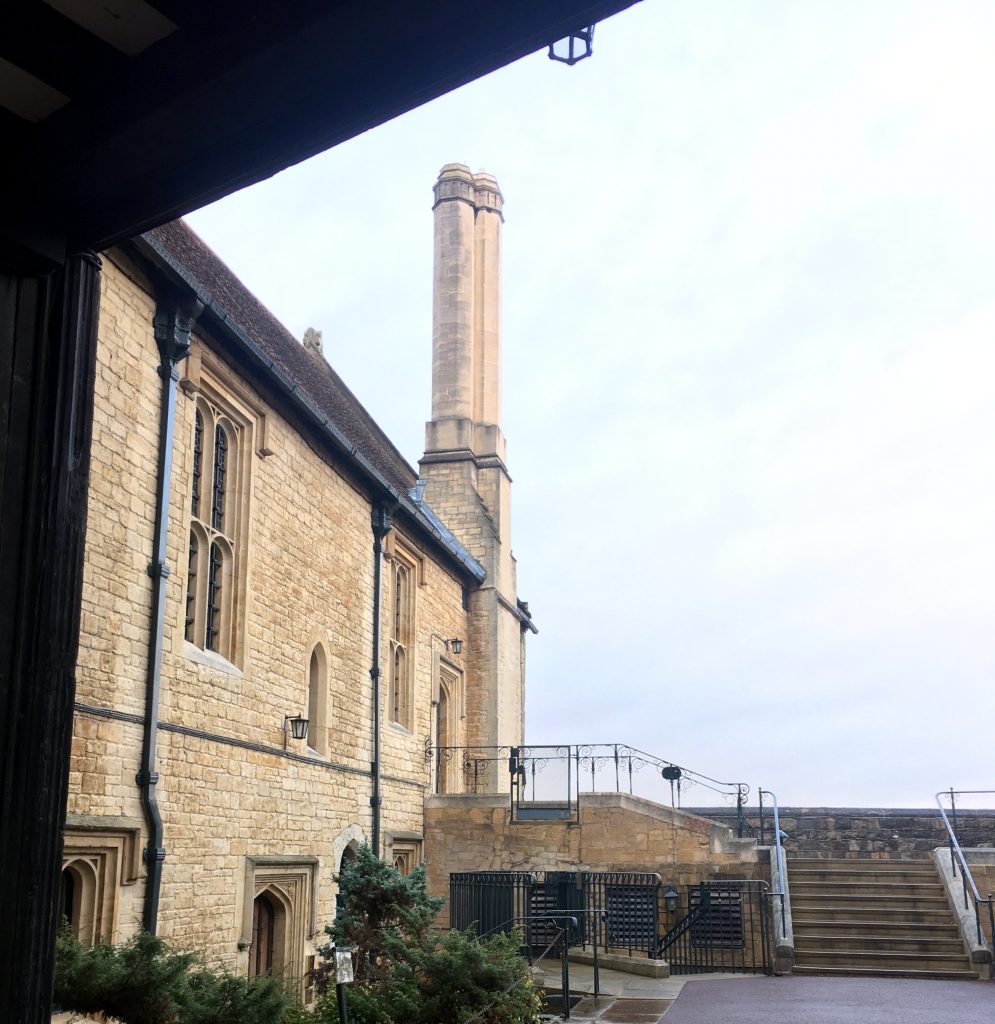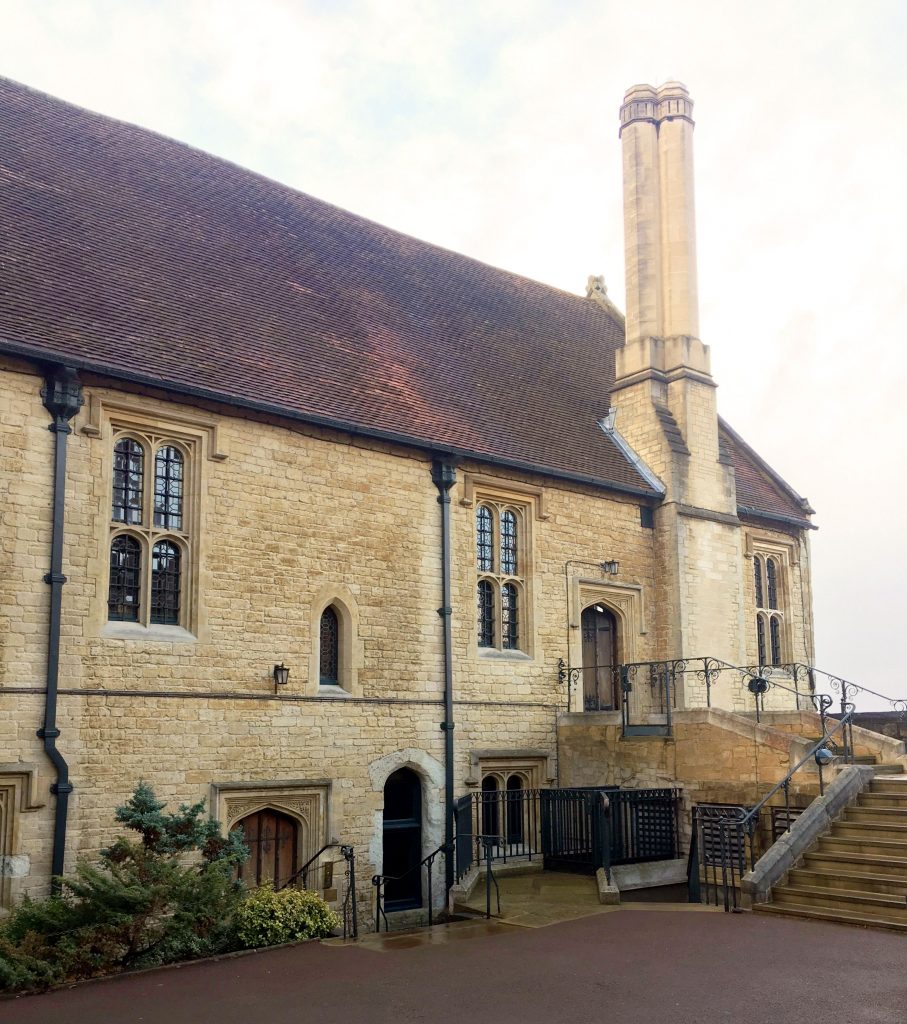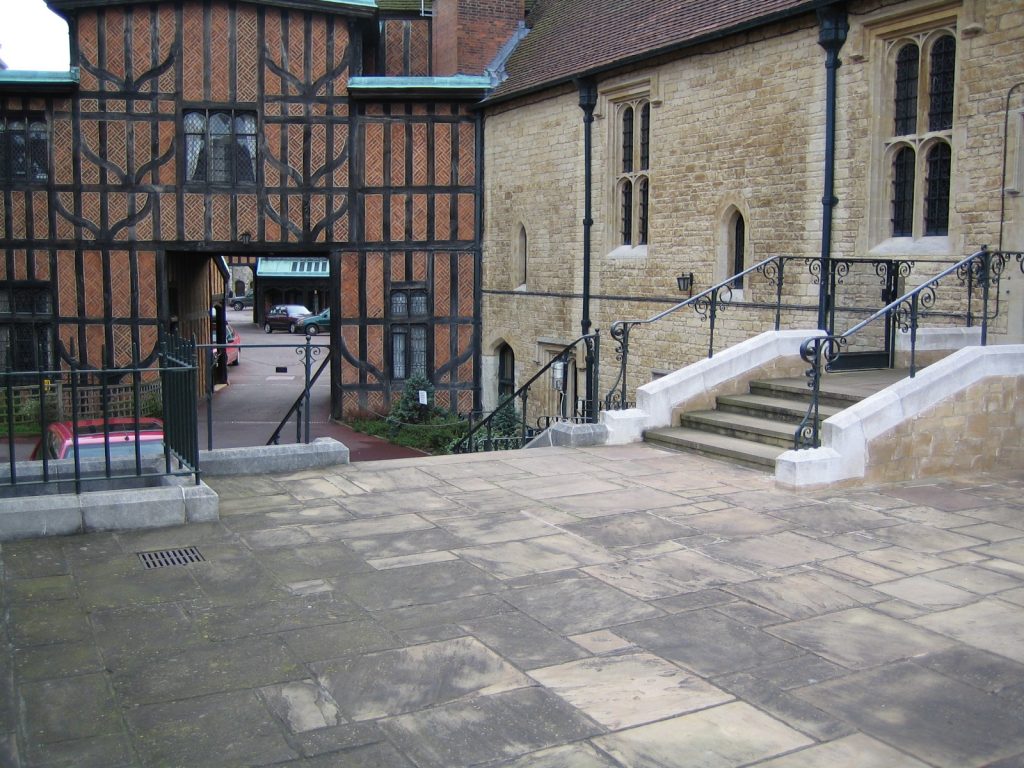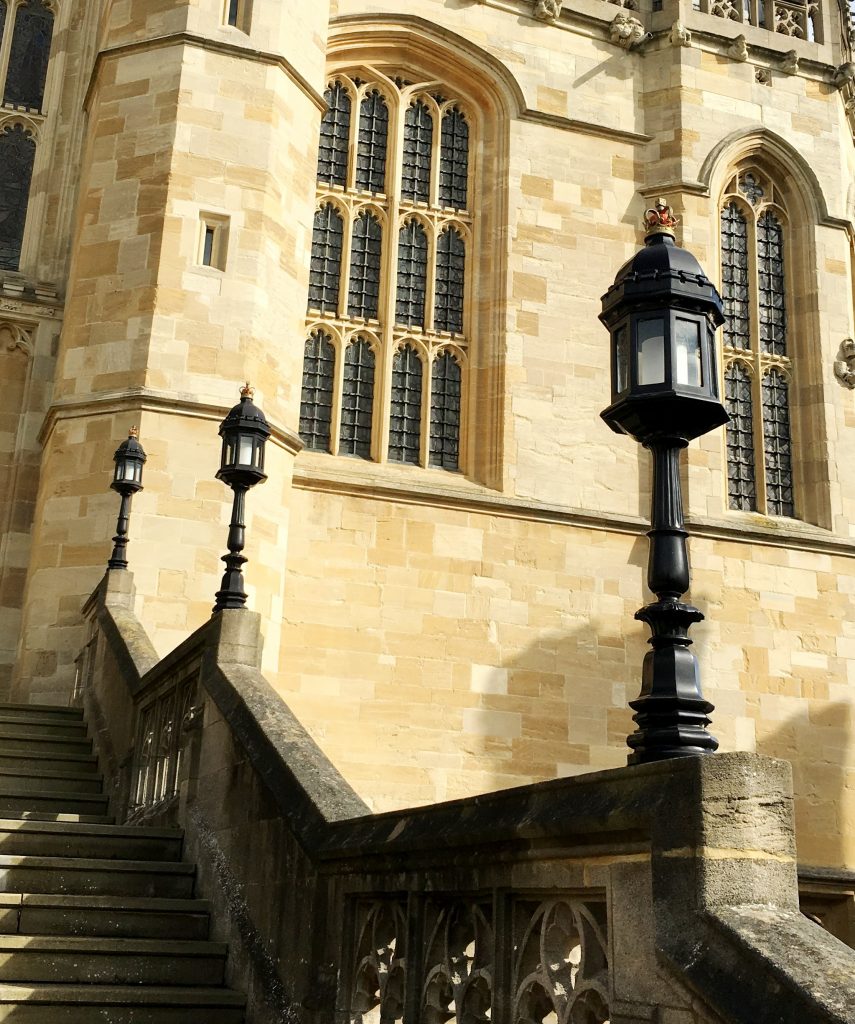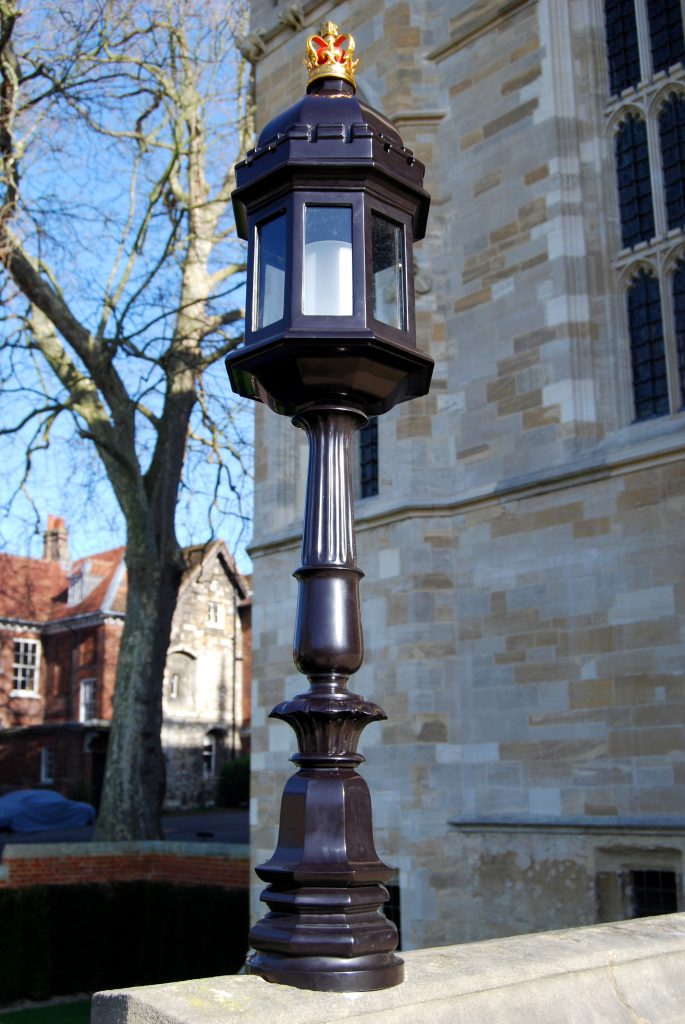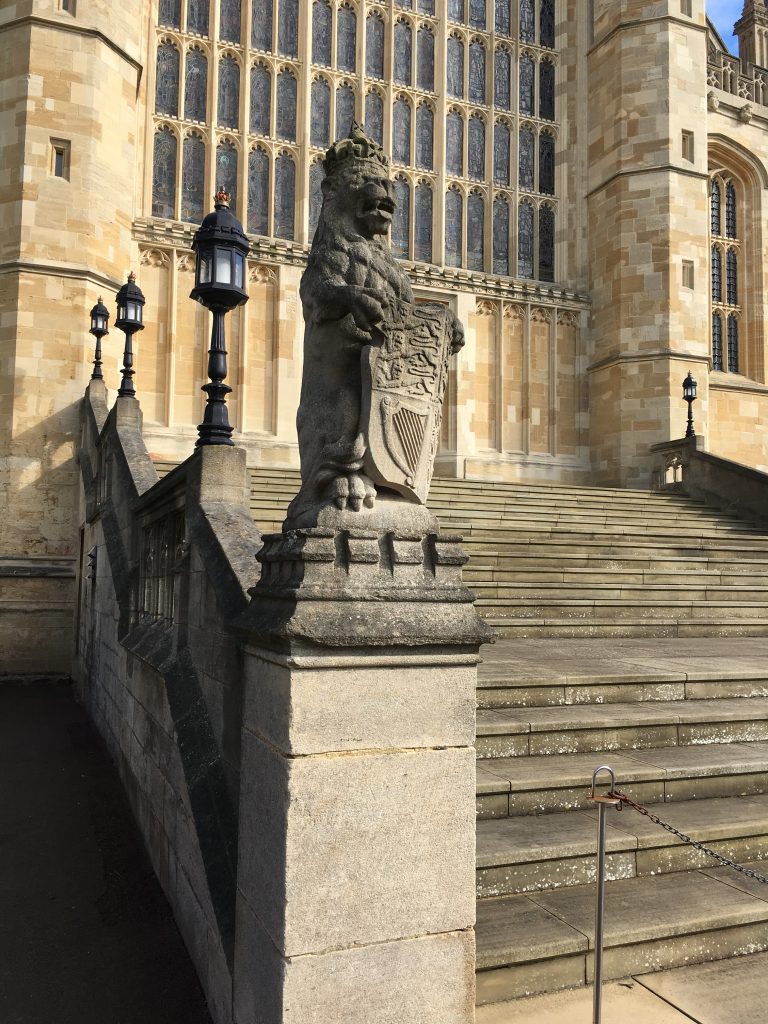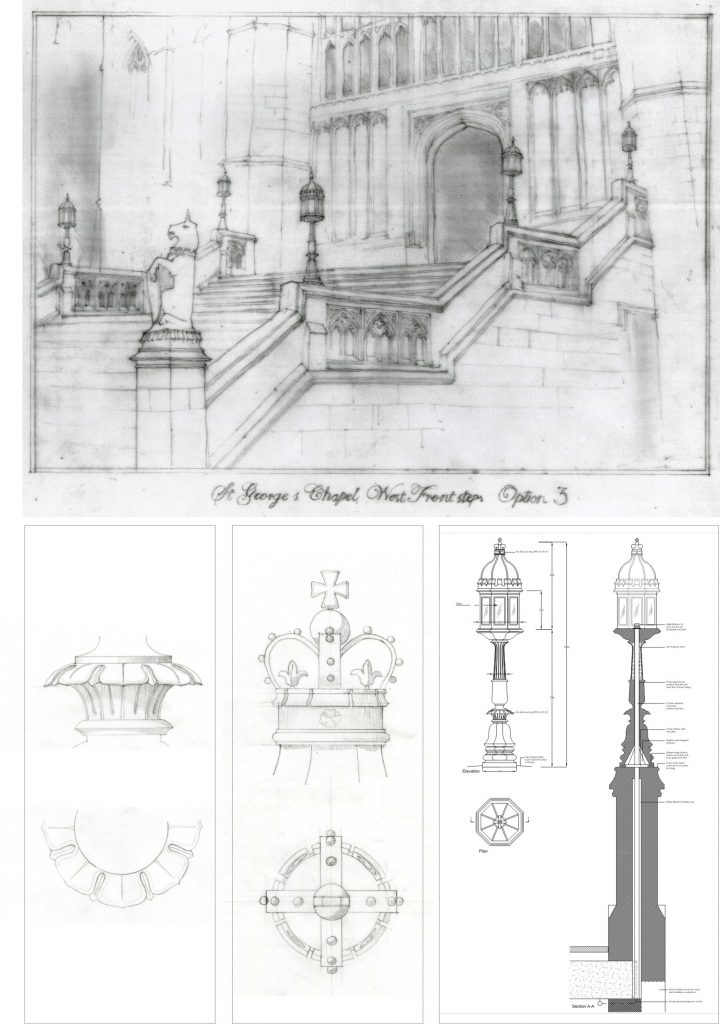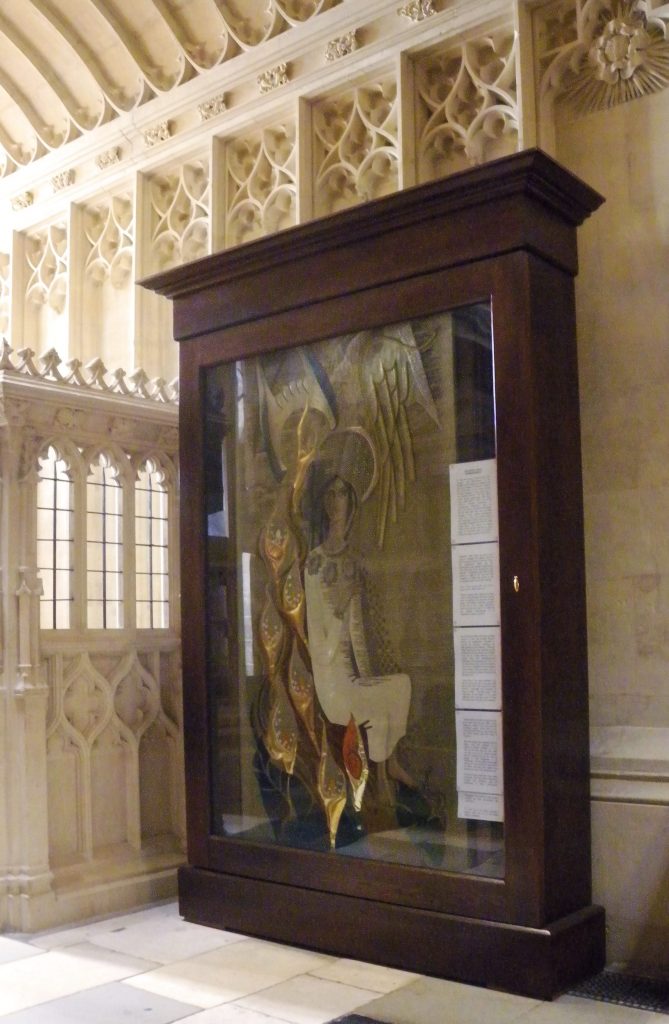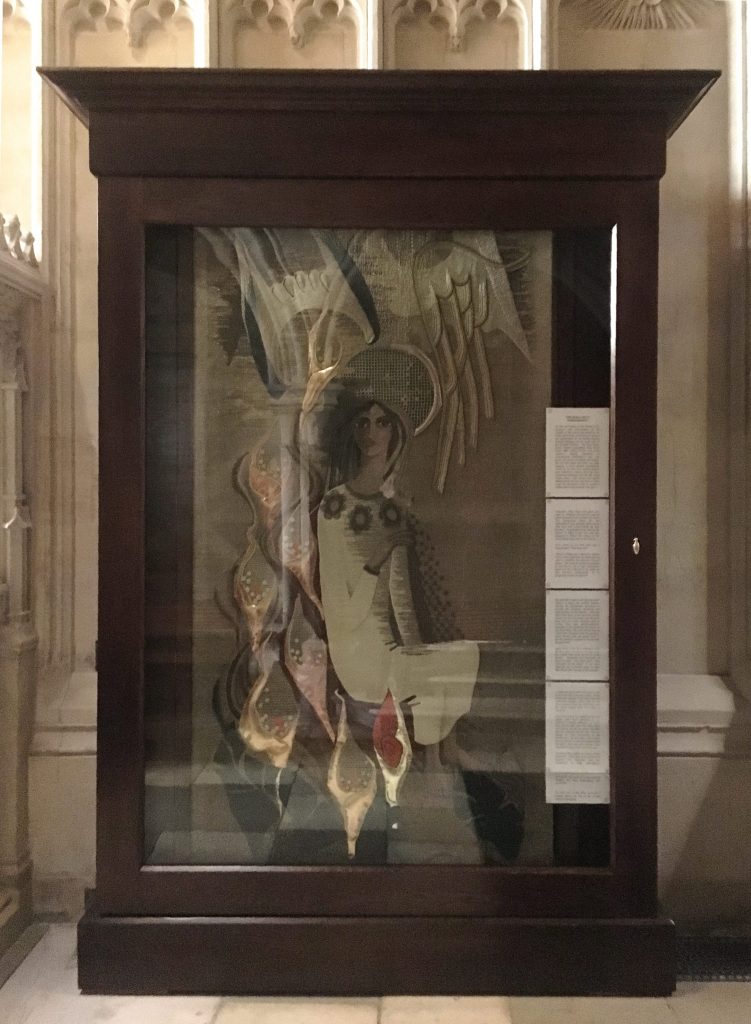Improvements
Typical works as part of ongoing operational improvements to St George’s Chapel:
Washrooms
The inevitable requirement for all intensively used organisations. A very early action in Martin Ashley’s Surveyorship was to install washrooms into a former oil-tank housing below the roadway in Denton’s Commons behind St George’s Chapel, preserving the iconic pastoral view of this part of the College of St George. This obviated the need for temporary washroom wagons that were previously always needed when there was an event in the Chapel, and is an example of the simple but pivotally important needs that must be met by the Surveyor in conjunction with the Dean and Canons and the Canon Steward’s team.
West Steps Lanterns
Apart from being the processional West Steps into St George’s Chapel, the steps also provide an emergency ‘means-of-escape’ route when major services and events are staged in the Chapel. As some of these are evening events then inevitably the steps need to be lit, and there were prior ad-hoc lighting solutions which required improving. There was also an issue with general lighting in the Horseshoe cloister precinct in front of the West Steps, and an opportunity was taken to assist with both of these needs and to design and fix new cast metal lamp standards to Sir Harold Brakspear’s 1920’s Clipsham Stone balustrades which replaced Sir Gilbert Scott’s Bath stone original balustrades. These lamp standards were designed with the assistance of St George’s Chapel Fabric Advisory Committee to respond to the chronology of iron lanterns within the Windsor Castle wards yet be unique to St George’s Chapel and the College of St George. They were fabricated by specialist lighting company Madison Black and installed with the help of stonemasons to the West Steps parapets in 2011 since when, lit by low energy use LED light sources they have successfully answered the needs of emergency egress from the Chapel and an additional level of additional lighting within.
Beryl Dean Tapestries Cupboard
Beryl Dean was a remarkable exponent of modernist design in ecclesiastical embroidery in the mid to late 20th century. An obituary notice in 2001 records that “She introduced an entirely new approach into a field hitherto limited to traditional Victorian style”. Her five large panels commissioned in 1974 for St George’s Chapel are one of her most notable works, wonderfully depicting the Virgin Mary and the early life of Christ:-
– The annunciation
– The visitation
– The adoration of the magi
– The temptation in the wilderness
– The miracle at Cana
The tapestries were commissioned by the Friends and descendants of the Knights of the garter to mark the Chapel’s quincentenary in 1975.
In recognition of the significance of this commission the Dean and Canons more recently decided to store and display the tapestries in the Chapel Ambulatory, in a specially-made glass fronted cabinet within which the tapestries are hung but can be ‘rotated for viewing’ each at their appropriate time. Due to the high significance of the historic stonework of the Ambulatory this very tall oak cupboard could not be fixed to the building in any way whatsoever, and the eventual solution was to hide extremely heavy flat lead weights into the back of the cupboard to counter-balance the great weight of the glass door when it was swung open to rotate the tapestries. This was successfully achieved within a designed appearance that was not inappropriate in the context of the immediately adjacent Sovereign’s Entrance. The cupboard was manufactured and installed by the hardwood craftsmen Treske Furniture of Thirsk, who have a long and happy relationship of providing special fittings and fixtures for St George’s Chapel and the College of St George.



